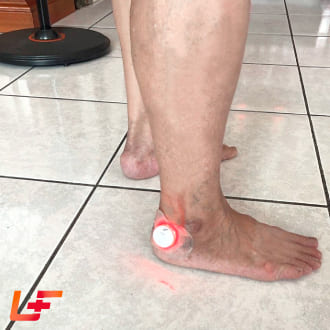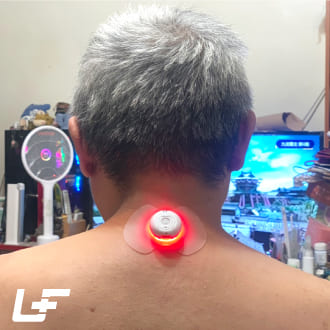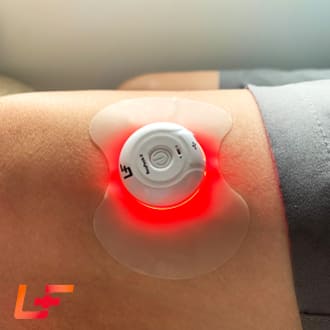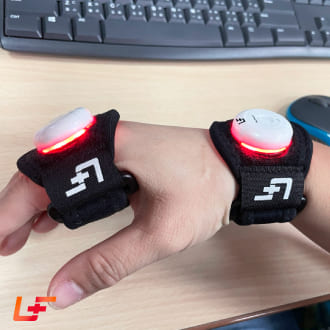Jun.2020
02
Did you know that ATP is needed for running and running?

Exercise Energy System Exercise Energetic System
Adenosine triphosphate(ATP, Adenosine Triphosphate)It is the direct source of energy for various life activities (rest, walking, exercise, etc.). The body is like an electric fan, and the sugar and fat in the body are like coal. To make the electric fan work, burning coal must be converted into electrical energy. ATP is the electrical energy of the body.
ATP cannot be stored. The molecular formula is AP~P~P. A is adenosine, P is a phosphate gene, and ~ is a special chemical bond called a high-energy phosphate bond. The high-energy phosphate bond far away from A in the ATP molecule is easy to hydrolyze and release energy under certain conditions, and ATP is converted into adenosine diphosphate (ADP); ADP is also easy to re-form and store energy and convert into ATP.
The content of ATP in cells is very small. However, the conversion of ATP in cells is very rapid. The content of ATP in the cell is always in a dynamic balance, which is of great significance for forming a stable energy supply environment inside the organism.
Human muscle contains two different types of creatine: unbound creatine and phosphocreatine with phosphate radicals, and phosphocreatine accounts for about two-thirds of the total creatine content. When muscle contraction produces movement, the body uses ATP as a source of energy. The ATP content in the human body is very small, and more ATP must be produced to maintain continuous exercise. At this time, the phosphocreatine stored in the muscle will sacrifice its own phosphate to make ADP synthesize ATP. This process does not require oxygen to participate.
Energy supply characteristics of marathon or long-distance running:
In the starting stage: start at a faster speed and occupy a favorable position. At this stage, the phosphagen system and the glycolysis system are mainly used for energy supply; in the middle of running at a constant speed, the glycolysis system is used first (such as the first 800m), and then the aerobic oxidation system is mainly used Function; near the end: sprint, 10-20s, mainly powered by phosphagen system and glycolysis system.
When professional running coaches talk about various training methods for running, they usually first talk about the three major energy ATP systems of runners, and formulate targeted training methods according to the weak links of runners. The three major ATP energy systems of runners, or the three major ATP functional systems of the human body: ATP-PC system (phosphorogen system), aerobic oxidation system, lactic acid energy system (also known as glycolysis system)
The exercise energy system refers to the energy usage in the body during exercise. The energy used by exercisers varies with different exercise intensities and durations, but the entire energy system can be divided into anaerobic reaction and aerobic reaction.
(Aerobic Response) Aerobic System: Low Power/Long Time
- Energy supply characteristics: The total amount of ATP (the energy necessary for muscle movement and growth) is large, but the rate is very low and the duration is long. It requires the participation of oxygen and does not produce by-products such as lactic acid. The final products are water and carbon dioxide
- Main energy supply sports: long-distance running, walking, yoga, etc.
Long-term exercise requires the participation of the aerobic system, and the functions of various energy adaptation systems are as follows:
- The role of the ATP-CP system is reduced from the highest to the lowest.
- The lactic acid system is very stable and maintains a high dose.
- The amount of action on the aerobic system changes from the lowest to the highest.
When the exercise intensity is low, the continuous exercise time is long, and the oxygen supply is sufficient, pyruvate will be further oxidized to form acetyl-coenzyme A (Acetyl-coA), and enter the Kreb's cycle reaction. NADH2and hydrogen atoms (H+) and electronic (e-) under aerobic conditions, with the help of cytochrome (Cytochrome), finally combine with oxygen to form water (H20), and release carbon dioxide (CO2); one molecule of glucose will not form thirty-eight ATPs when fully oxidized, so the reaction is carried out under sufficient oxygen, so it is called an aerobic reaction, and the ATP produced by this reaction is more than anaerobic reaction, so it can be used for Prolonged movement of the human body. Generally, the longer the continuous exercise time, the more obvious the dependence on aerobic response to generate ATP to supply activities. For marathon runners, more than 98% of the energy used during exercise is supplied by aerobic response .
Aerobic energy supply means that under the condition of sufficient oxygen supply, sugar (glucose and muscle glycogen) and fat in the body are aerobically oxidized into carbon dioxide and water, and a large amount of energy is released, which is converted into ATP from ADP. One molecule of glucose can produce 38 ATPs (one molecule of glucose in the lactic acid system only produces two ATPs). Fat can only undergo aerobic metabolism.
(anaerobic reaction) lactic acid system: medium power/short time
- Energy supply characteristics: The total energy supply is more than that of the phosphagen system, the duration is shorter, the power output is second, no oxygen is needed, and the final product is the substance that causes fatigue-lactic acid.
- Main energy supply sports events: 1 minute high power output events, such as 400m running, 100m swimming, etc.
Glycolysis in skeletal muscle produces ATP, and glucose can be decomposed anaerobically to generate 2 mole of lactic acid, which can quickly produce a small amount of ATP.
Lactic acid can be aerobically decomposed by other tissues to produce ATP. If the production rate of lactic acid exceeds the clearance rate, it will cause the accumulation of lactic acid in the blood. When the muscle sarcosine phosphate storage is exhausted, it will become the main energy supplier. .
Types of exercise: High-intensity anaerobic activities ranging from 20 seconds or more to several minutes, the lactic acid system is very important, such as 800-meter short-distance running, and 100-200-meter swimming are all of this type of exercise.
When an athlete needs to use energy quickly, the sugar in the human body will be decomposed into pyruvate (Pyruvate), and the pyruvate will continue to react to produce lactic acid (Lactate). One molecule of glucose can decompose two molecules of lactic acid and produce four molecules of ATP at the same time, but during the reaction, two molecules of ATP will be used, so two molecules of ATP are actually obtained. The process of producing lactic acid from pyruvate depends on NAD+(Nitotinamid adenine denucleeide), pyruvate is catalyzed by lactate dehydrogenase (Lactate dehydrogenase), and NADH and H+Combined to form lactic acid and NAD+, And release ATP, this kind of reaction is quite fast, can make ATP quickly in the body, for the urgently needed use. Generally speaking, after 40 to 50 seconds of exercise, the ATP produced by the lactic acid system can be used up.
(Anaerobic reaction) ATP-PC system: explosive/high power/very short time
- Energy supply characteristics: the total energy supply is small, the duration is short, the power output is the fastest, no oxygen is required, and no intermediate products such as lactic acid are produced.
- Main sports for energy supply: sprinting, throwing, jumping, weightlifting, etc.
It can provide enough energy for short-term, high-intensity exercise.
When ATP is exhausted, high-energy phosphate bonds can quickly move from phosphocreatine to ADP to help continuously supply ATP, but the muscle storage cp is not high, so high-intensity exercise will be exhausted in about 10 seconds, and low-intensity exercise can reach 3 minutes.
Creatine phosphate → creatine + phosphate → immediately provide phosphate
The direct energy supplier for muscle contraction is ATP (adenosine nucleosine triphosphate), which is stored in the body for use at any time. When ATP is hydrolyzed, it will be decomposed into ADP (adenosine diphosphate) and a phosphate Salt releases a lot of energy at the same time. When necessary, ADP can be decomposed into AMP (adenosine phosphonate) and release energy. At the same time, there is quite a lot of PC (creatine phosphate) in the human body, which can combine its own phosphate bonds with ADP to synthesize more ATP. In the most intense exercise situation, this system can supply about 80% of human body activity. to ten seconds. However, because the amount of ATP or PC stored in the muscles is not large, the ATP produced by this system is mainly used to provide energy sources for high-intensity exercise at the beginning of exercise or within 10 seconds, such as: sprinting, swinging Balls, punches, etc.
source:
- terms.naer, Educational Dictionary, Sports Energy System, Huang Yongren, 2000/12
- kknews, Song on the Road, Article 004 of Running Series, 2017/05
- kknews, the three major energy systems you must understand, a sycamore tree, 2016/10
- Gaoli Tutorial Class, 2013/05
*Disclaimer: The content contained in this article is for informational purposes only and does not constitute an offer of sale, solicitation of purchase, invitation, suggestion or recommendation to complete any transaction. This article is also the author's personal experience and opinions, and its content does not represent the views of this website. The content published on this website may provide or establish relevant links to third-party webpages. The webpages or materials pointed to by these links are all provided by the linked websites, and the relevant rights are owned by these websites or legal rights holders , this site does not guarantee its correctness, timeliness or completeness. If you find that the content of this website may infringe, please use the "Contact Us" function of this website to contact us immediately, and it will be removed or dealt with appropriately.







